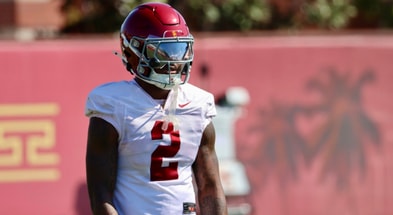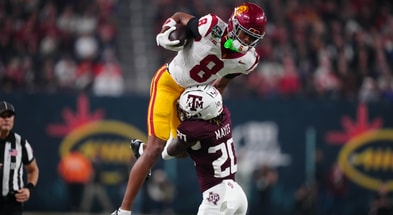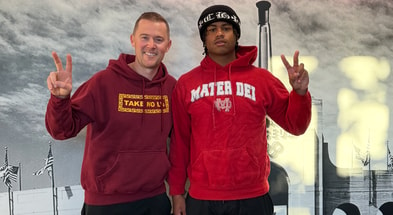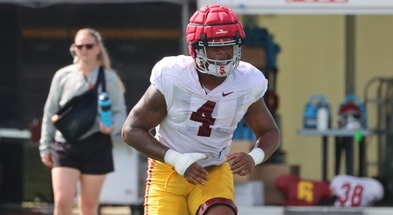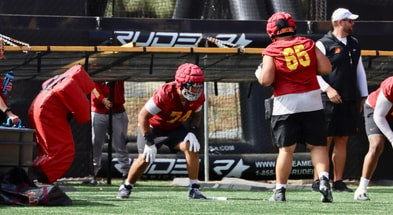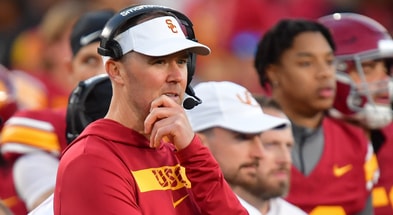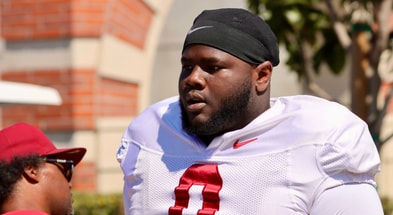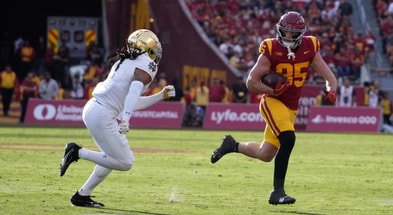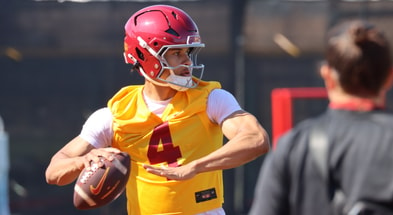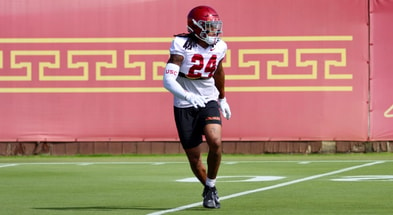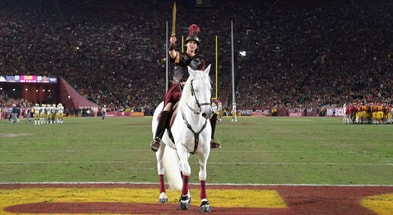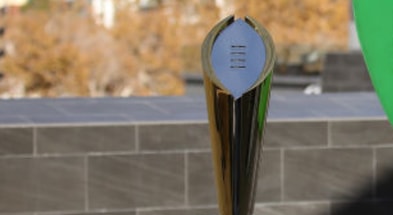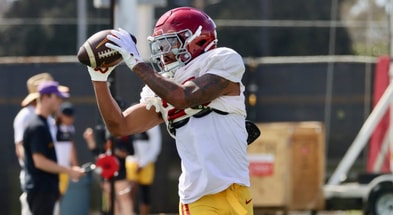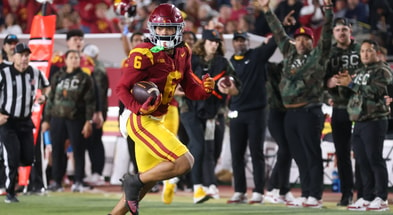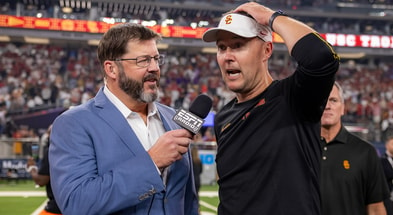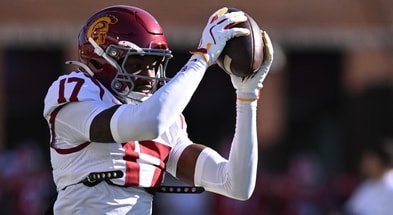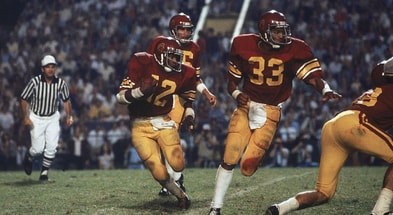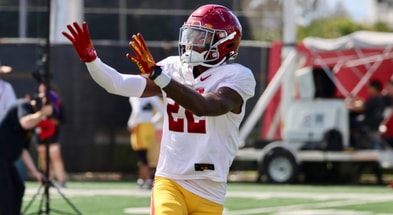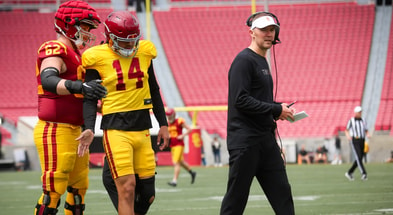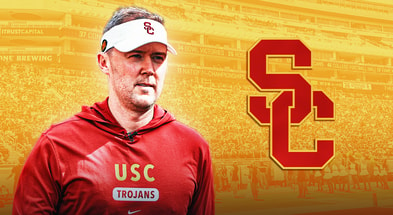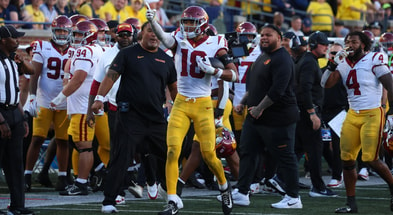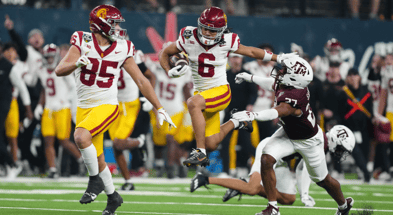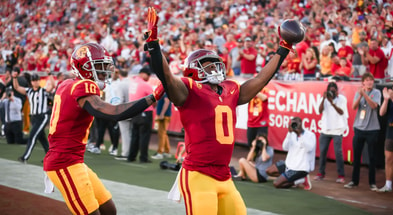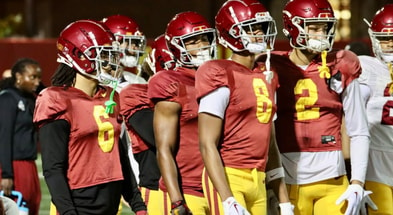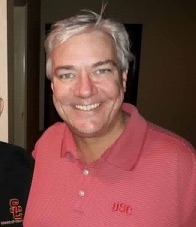Musings from Arledge: The Big Questions Facing USC Football

It’s not fun writing the same thing every week. “Defense falls apart, Trojans lose.” I don’t want to write that every seven days. Fortunately, seeing as how I don’t make my living from writing about USC football, I always have the option to take a break, which I’ve done for about the last month. (I was also distracted with my new hobby of writing Hallmark Channel scripts. Some of you know what I’m talking about.) But it’s time to dive back in and talk about the big questions facing USC football this offseason.
And there are some big ones, which is not what I expected when Lincoln Riley was hired two offseasons ago.
Obviously, defensive coaching has been the biggest issue for USC football throughout Riley’s tenure. Riley is now saying all the right things. I think he probably understands the depth of his error. And I think he’s now doing the right things. His two big hires—D’Anton Lynn and Matt Entz—are fantastic. Lynn turned a terrible UCLA defense around immediately, and he’s a compelling communicator with a ton of quality NFL coaching experience who was also a very good corner at Penn State before that. This is a guy who knows defense, and his pro experience will be enticing to recruits. The big question with Lynn was his lack of a college track record.
And USC dramatically helped shore up that potential weakness with the Matt Entz hire. Entz has a ton of college experience and at the most consistent college football program in the country over the last two decades. No, he wasn’t coaching at the FBS level, but the consistency of North Dakota State over the last 15 or 20 years is remarkable, and you can’t have that level of consistency without a tremendous culture that stressed discipline and focus. And you can’t win that consistently if you’re frequently getting out-schemed.
The combination of Lynn and Entz should mean very good things for the USC defense. USC didn’t have the most talented defensive roster in the country last year. But they had more than enough talent to be decent. That they were maybe the worst defense in USC history (at least statistically) is all about a fundamental and catastrophic failure with the coaching staff. Next year’s team will almost certainly know where to line up, it will not have players put in impossible matchups as happened all the time with Alex Grinch, and I expect they will play hard and with physicality. Give me those things, and I can deal with some holes in the roster. (More on that below.)
We’ll see if Lincoln Riley really means it when he says he’s going to be putting the needs of the defense first. But he’s done what he should have done so far this offseason. So I’m optimistic that he’s seen the light.
The second major issue is the offensive line. There was a massive drop-off from 2022 to 2023. The good news is that last year’s freshmen OL class is promising; Elijah Paige and Alani Noa may be ready to start next year, and the other freshmen may be ready to add some quality depth. If Gino Quinones comes back strong, if Emmanuel Pregnon can take strides this offseason (and he should—he’s a talented guy), and if Jonah Monheim returns, USC has the makings of a decent unit. USC probably still needs to hit on a couple of quality contributors from the transfer portal—and as we saw last year, even guys who have played well at other places are not guaranteed to play well here.
We might question whether Josh Henson’s decision last year to move guys to positions they had never played before was the right move. After seeing what happened, it’s hard not to wonder. Still, USC recruited poorly on the offensive line before Riley arrived, and it’s very difficult to build an offensive line quickly: freshmen are almost never ready to play, and plugging in a lot of transfers creates problems, because on the offensive line, continuity and experience playing together are so important. So while I hold Riley completely responsible for the defensive disaster last year, I think he deserves some slack on the offensive line’s shortcomings.
But he also doesn’t have much time to fix those shortcomings. I suspect USC will have a good player at QB next year. But whoever it is, they’re likely to be mortal, not Superman. So that O-line must step up, especially against what is likely to be the hardest USC schedule in many years.
That brings us to the third big question and the one that is by far the biggest to me. Can USC salvage its recruiting efforts?
Let me start by saying that I know USC still lands a lot of good football players. I wrote last year that I thought USC’s recruiting class was probably underrated in the trenches but still a minor disappointment overall. And I think that’s true. Guys like Elijah Hughes, Sam Greene, and Alani Noa were, I think, vastly underrated. Some of the skill guys were as well. Christian Pierce is a good example. The frosh running backs looked very good. The receivers—who everybody already thought were good—are going to be dominant in the coming years. It’s a good class.
But I don’t think it’s an Alabama or Georgia class. And, increasingly, USC is struggling to compete even with Oregon for top-shelf recruits, which is a frightening problem. When a big-time prospect like Walter Nolen comes out at a huge position of need for USC, you’d like to see the Trojans in the mix. They’re not and they never were. That’s not good.
USC has three big problems when it comes to recruiting, only one of which it can fix. The first problem was the complete lack of faith that recruits, their parents, and their high school coaches had in USC’s defensive staff. Nobody wants to play for that Alex Grinch defense. Guys didn’t know where to line up, they were given impossible assignments, and they played soft and undisciplined. Signing up to play for Alex Grinch is a bad career move. Fortunately, USC fixed that problem.
Top 10
- 1Breaking
SEC Order of Finish
Media Poll is out!
- 2New
Preseason All-SEC Team
Media votes are in
- 3
Bill Belichick, UNC
Docuseries set for release
- 4
Top 30 Head Coaches
Ranking college football's best
- 5Hot
Jeremy Pruitt
NCAA makes request in case
Get the Daily On3 Newsletter in your inbox every morning
By clicking "Subscribe to Newsletter", I agree to On3's Privacy Notice, Terms, and use of my personal information described therein.
The second issue is that USC must go out of the west for defensive linemen, and to a lesser extent, offensive linemen. They can do it. USC has the cachet to recruit nationally, and Lincoln Riley has shown an ability to pull some good players out of the south, especially Texas. But it’s not easy to recruit in the home territory of other national powers; you don’t want to have to beat out Texas for a Texas kid or Georgia for a Georgia kid. You’ll win some of those fights, but not many. This is a problem, and it means USC has to hit at a much higher rate for the impact linemen in California and on the West Coast.
To do that, it must solve its biggest problem, and the biggest problem—by far—is NIL. USC is in an unusual position. In the past, USC had huge recruiting advantages over all the other schools west of Austin, Texas. USC was the only blue-blood program in the West, and when USC was competently led, it would dominate recruiting in the West. I’m not sure that’s true anymore. USC still has more cachet than any other program in the West, although Oregon has been gaining in that department. What USC doesn’t have are the resources to compete in the new NIL world. And don’t kid yourself about this; USC has a lot of successful alumni, and the school raises vast amounts of money. What USC doesn’t have is a huge donor or two that is willing to pour money into NIL. These days, you need that.
Oregon obviously has that. But let’s not lose sight over how unusual Oregon’s situation is. Phil Knight is not only a very wealthy alum, he’s a very wealthy alum that loves Oregon sports and—critically—his entire profession is tied into major athletics. It’s what has made him rich and powerful. It’s not just a hobby, it’s his brand and his livelihood. No USC alum is in that situation. George Lucas may be rich, but his life isn’t sports. Phil Knight’s is. That makes Oregon’s situation unique. There are other people out there—T. Boone Pickens, for example—who are willing to give lavishly to their alma mater’s athletics programs. But USC doesn’t have that. Most programs don’t. USC is asking normal alums to donate $250 to its NIL collective. That’s not a good sign.
So USC is one of the have nots, currently. USC is forced to search for value. It’s playing Moneyball like the Oakland A’s rather than just outspending everybody else like the New York Yankees. (That’s an exaggeration, obviously, but there’s truth in it.) And as long as USC is in that position, it will have difficulty landing the elite line prospects from the south and maybe even from Mater Dei and Bosco. It will still land quarterbacks and offensive skill players. But the guys that play left tackle or defensive tackle for three years and leave to be first round picks? It’s going to be tough to get those guys.
And we should be honest about this: if you can’t land those guys, you’re going to have a hard time competing with Alabama, Georgia, and the other elite programs. You can have good teams. You can even catch lightning in a bottle occasionally and win a title. Maybe. But you can’t compete at the highest level when you don’t recruit at the highest level. Even if you do a good job of uncovering hidden gems, the way I think USC did with Elijah Hughes and Sam Greene last year, you’re not going to beat Georgia with hidden gems. The margins are too tight. You have to consistently hit on underrated prospects the way very few coaching staffs can. Because Georgia will go three deep on both lines with NFL players. If you’re not fielding future NFL players, you’re not beating teams like that consistently.
The numbers are overwhelming historically: the teams that win national titles tend to recruit in the top three in the recruiting rankings. They tend to land lots of five-star recruits. Pete Carroll did. Urban Meyer did. Nick Saban and Kirby Smart do. Dabo Swinney was … until the transfer portal and NIL set back his recruiting efforts and, therefore, his program. When we tell ourselves that recruiting rankings don’t matter, we’re lying to ourselves. They do matter. True, not every five star pans out. Plenty of three stars make NFL rosters, which is why it’s stupid to complain when USC lands a three-star recruit; some of these guys turn out to be great players. But don’t focus on the individuals. Focus on the whole. If you land 5 five-star players and 17 four-star players every year, you will have a major talent advantage over the teams that land just outside the top ten in the recruiting lists. You will, and that talent gap won’t be slight, it will be enormous.
And the most talented team usually wins. The team with a few outlier freaks usually wins. How many times did USC win because Reggie Bush did something spectacular? Having a handful of elite dudes is often the difference between 10-2 and 12-0.
USC can compete for occasional Big Ten titles without big NIL dollars. If it starts playing sound and aggressive defense, it can win a lot of games and finish in the top ten a reasonable amount of the time. But if USC doesn’t find a way to compete in NIL, USC is not going to return to the elite. It won’t happen. Not without the payroll. The A’s or the Royals can field competitive teams sometimes. But without money, they won’t compete consistently with the best teams the way the Dodgers, Yankees and Red Sox can. That’s just life in a sport with no salary cap, and in a sport where there is no salary cap and non-stop free agency—which is major college football in 2023—you better be able to show me the money. And right now, USC can’t. So set your expectations accordingly.
